What's New
Displaying results 3671 - 3680 of 4052
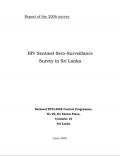
Resource | Publications,
The National STD/AIDS Control Programme (NSACP) of Sri Lanka has been annually conducting HIV Sentinel sero-surveillance since 1993. This survey was initially designed on the guidelines prepared by the World Health Organization (WHO) in 1989. The purpose of HIV sentinel survey is to track HIV infection levels through ‘watch post’ institutions.
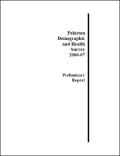
Resource | Publications,
The 2006-07 Pakistan Demographic and Health Survey (PDHS) was carried out by the National Institute of Population Studies (NIPS) from early September 2006 to late-February 2007. The PDHS is one of the largest household-based surveys ever conducted in Pakistan. Teams visited 972 sample points across Pakistan and collected data from a nationally representative sample of over 95,000 households. Unlike the standard DHS design, the PDHS was designed with the objective of obtaining data related to maternal and neonatal health, especially to obtain an accurate measure of the maternal mortality ratio, as well as to obtain data on the causes of deaths to women and children. Consequently, all households were interviewed with a questionnaire that elicited information on recent births and deaths to household members. Recent deaths to adult women and children under five were followed with a more detailed interview on symptoms and characteristics of the deceased.

Resource | Presentations,
To estimate HIV prevalence among persons in the general population aged 15 to 49 years in 2006, based on currently available data
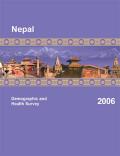
Resource | Publications,
The 2006 Nepal Demographic and Health Survey (NDHS) is the seventh in a series of demographic surveys conducted in the country and is the third survey conducted as part of the worldwide Demographic and Health Surveys (DHS) program.
The 2006 NDHS includes topics related to fertility levels and determinants, family planning, fertility preferences, infant, child, adult and maternal mortality, maternal and child health, nutrition,
knowledge of HIV/AIDS and women’s empowerment. The 2006 NDHS for the first time also includes anemia testing among women age 15-49 and children age 6-59 months. As well as providing national estimates, the survey also provides disaggregated data at the level of various domains such as ecological region, development region, as well as for urban and rural areas. This being the third survey of its kind, there is considerable trend information on reproductive and health care over the past 10 years.
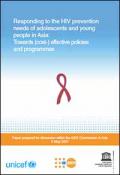
Resource | Publications,
The major recommendation of this paper is to strongly increase resources available for age- and gender- appropriate HIV prevention and support services for young people engaging in high risk behaviors: injecting drug users, young women and men involved in sex work and young men who have sex with men.
The coverage of comprehensive interventions that specifically reach these young people should be scaled up to reach 50% in 2010 and 80% in 2015.
Despite the huge difference in physical and cognitive development levels within the age group of 10 to 24 year olds (defined as adolescents and young people) the current HIV prevention services for people engaging in high risk behaviors are not age-specific. For the age group of 18 to 24, operations research is needed to study whether the effectiveness of existing programs can be further increased by making them more appropriate. For those under 18, it is proposed that, in principle, interventions should aim at providing alternatives to the behaviors in question and preventing exploitation. For those who have no alternative or do not wish to change their behavior, the paper urges a rights-based approach aimed at reducing harm to the child – i.e. they should not be withheld their right to access prevention services because of their young age.
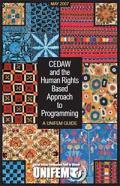
Resource | Guidelines,
Promoting universal respect for human rights has been one of the fundamental goals of the United Nations since its creation, and the development of a comprehensive international human rights normative and standard-setting system within the United Nations was one of the great achievements of the 20th century.
The United Nations Development Fund for Women has worked for gender equality and women's empowerment for over 30 years, and since the 1990s the organization has placed a particular emphasis on supporting implementation of the Convention on the Elimination of All Forms of Discrimination against Women (CEDAW). This guide consolidates insights and experiences gained by UNIFEM to date, to assist staff in further deepening the HRBA within programming. It’s a contribution we share with partners in our common effort to advance women’s human rights.
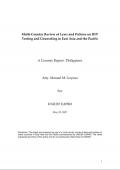
Resource | Laws and Policies,
The author was commissioned by UNICEF – East Asia Pacific Regional Office (EAPRO) to conduct this Legal and Policy Review of the existing Philippine laws and policies surrounding HIV Testing and Counseling. The review is an additional input to the discussions on HIV testing approaches, and to gain a glimpse of the legal and policy environment protecting the three C’s (Consent, Counseling, and Confidentiality) in currently implemented methods in the countries covered.
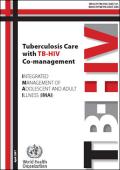
Resource | Guidelines,
This guideline module is for use in caring for patients with TB disease at first-level health facilities (health centres and the clinical team in district outpatient clinics) in countries with high burden of HIV. It addresses the care of both HIV-positive and HIV-negative patients with TB disease.
It is based on the STB training course and reference booklet Management of Tuberculosis: Training for Health Facility Staff WHO/CDS/TB/203.a-l and the following WHO normative guidelines issued in 2006: Antiretroviral therapy for HIV infection in adults and adolescents: Recommendations for a public health approach; Guidance for national tuberculosis programmes on the management of tuberculosis in children; and Tuberculosis infection control in the era of expanding HIV care and treatment: Addendum to "WHO guidelines for the prevention of tuberculosis in health care facilities in resource-limited settings", 1999.
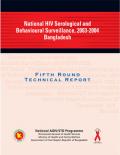
Resource | Publications,
This report presents the findings and conclusions from the fifth round of the national HIV serological and behavioural surveillance that was conducted between June 2003 and March 2004. The information obtained can serve as a tool to inform programme policy and interventions, to advocate for increased resources and investment in prevention, aid in targeting interventions, and in measuring their progress and impact.
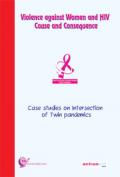
Violence Against Women and HIV Cause and Consequence: Case Studies on Intersection of Twin Pandemics
Resource | Publications,
Every year the number of cases of violence against women and girls reported worldwide is overwhelming. This is more alarming given the fact that the number is said to be largely under-reported, especially in South Asian countries like Nepal.
This study is a compilation of the real life incidents of women who have experienced the intersections of Violence and HIV. It is complemented by another research study that reviews gaps and ambiguities in policies on HIV and Violence against Women.





